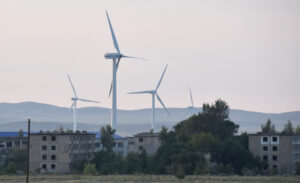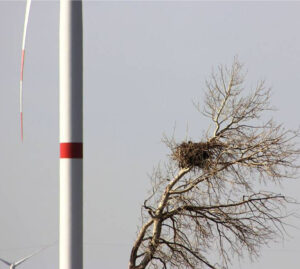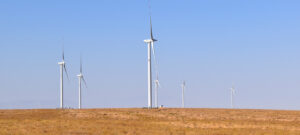Third International Scientific and Practical Conference “Eagles of the Palearctic: Study and Conservation”
Raptors Conservation. Suppl. 2. Proceedings of Conferences
Introduction to a lecture series on wind-wildlife interactions
Shaffer J.A. (U.S. Geological Survey, Northern Prairie Wildlife Research Center, Jamestown, North Dakota, USA)
Katzner T. (Forest & Rangeland Ecosystem Science Center U.S. Geological Survey, Boise, USA)
Contact:
Jill Shaffer jshaffer@usgs.gov
Todd Katzner tkatzner@usgs.gov
Recommended citation: Шаффер Дж.А., Кацнер Т.Е. Introduction to a lecture series on wind-wildlife interactions. – Raptors Conservation. 2023. S2: 439–441. DOI: 10.19074/1814-8654-2023-2-439-441 URL: http://rrrcn.ru/en/archives/35205
The development of wind power as a renewable source of energy is rapidly growing globally and in Kazakhstan. However, wind facilities sometimes have negative environmental effects on wildlife. As wind energy expands in Kazakhstan, there is growing interest among a number of organizations and agencies to understand and mitigate the potential effects on biodiversity. This introductory lecture launches a series designed to review background information, concepts, and techniques that reflect the state of the art in the science, mitigation, and policy regarding windwildlife interactions within the USA. We will first discuss why it matters that we think about wildlife when we are developing wind energy by examining how wind facilities affect wildlife. This discussion will focus on effects on individuals (fatalities), effects on populations, and effects on habitat. Subsequently, we will briefly summarize key topics to be detailed in subsequent presentations. These include (1) pre-construction surveys for birds and (2) for bats, (3) post-construction surveys for all taxa, (4) estimating detection rates, (5) mitigation approaches, (6) regulatory and policy considerations, and (7) best management practices to ameliorate negative wind-wildlife interactions. Some presentations will be entirely lecture, whereas other lectures will be designed to train participants in use of specific tools to collect and interpret data on wind-wildlife issues. As the wind industry expands, interactions between wind facilities and wildlife will increase and so will the opportunities to learn from past limitations to improve science and management approaches. We hope this lecture series will help practitioners in central Asia to build the conceptual and practical toolkit they need to address this important issue.



